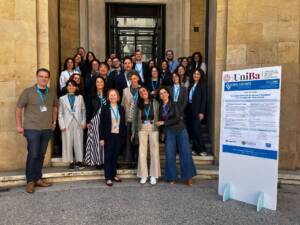
The WG1 involves medicinal chemistry teams that act in close association, will provide insights into the conformational and, therefore, pharmacological changes that are responsible for the activity of sigma-1 receptor ligands and drugs in clinical development that act by interaction with the sigma-1 receptor. Very small structural changes may unpredictably switch an agonist into an antagonist. However, functional assays are not harmonized, and an agreement has not been reached on which assay best measures ligands properties. WG1 is working to fill this gap with tools and methods that will profoundly implement the necessary knowledge about the receptor, both at the preclinical and clinical levels.
Leader:Dr. Carmen Abate
Co-leader:Prof. Michael Decker
Tasks and Activities
Task 1.1
Structural studies on sigma-1 receptor
Task 1.2
Synthesis of designed and directed sigma-1 receptor ligands and peptides
Task 1.3
Synthesis of fluorescent small sigma-1 receptor ligands
Task 1.4
Development of photoswitchable ligands
Task 1.5
Development of appropriate nanoparticles or drug-conjugates
Task 1.6
PET study
Task 1.7
Identification of repurposed ligands and natural ligands
Task 1.8
Synthesis of multi-target-directed ligands
Deliverables
D1.1
Definition of a model for a directed development of sigma-1 receptor agonist vs antagonist. Targeting the sigma-1 receptor mutation(s) underpinning diverse pathologies with novel designed ligands (articles, communications, patents)
D1.2
Development of both high affinity sigma-1 receptor agonists and antagonists to be studied as disease modifying agents (compounds)
D1.3
Development of fluorescent small sigma-1 receptor ligands (compounds)
D1.4
Development of high affinity sigma-1 receptor photoswitchable probes for sigma-1 receptor agonist or antagonist activities (compounds)
D1.5
A diagnostic PET agent for specific CNS disease(s) (compound(s))
D1.6
Identification of repurposing or natural ligands with sigma-1 receptor activity (compounds)
D1.7
Development of multi-target-directed candidates in complex pathologies with the potential of becoming disease modifying agents (compounds)
